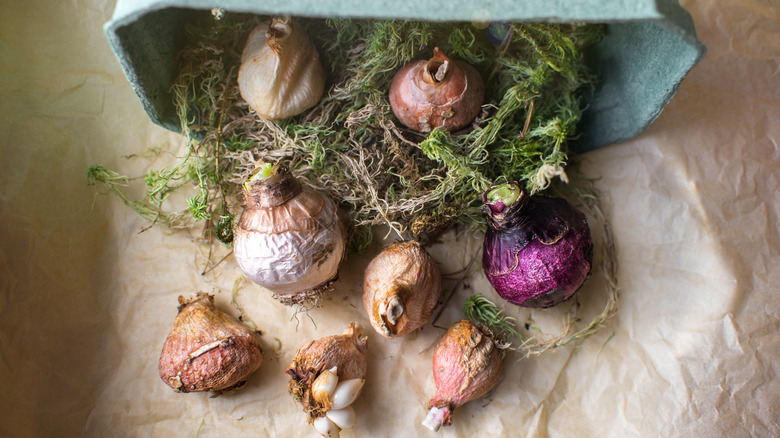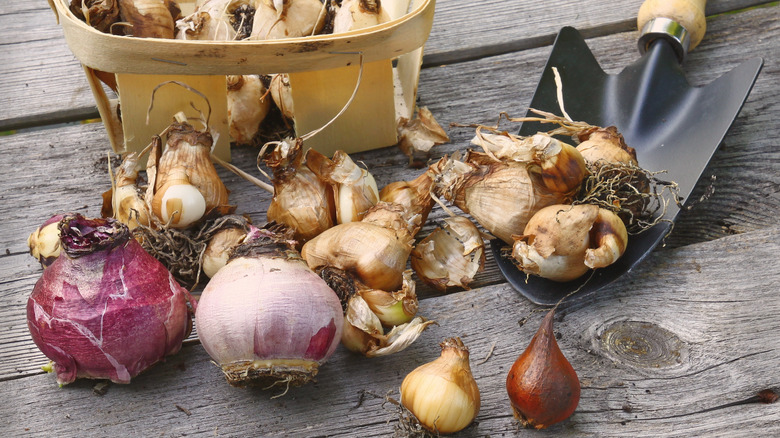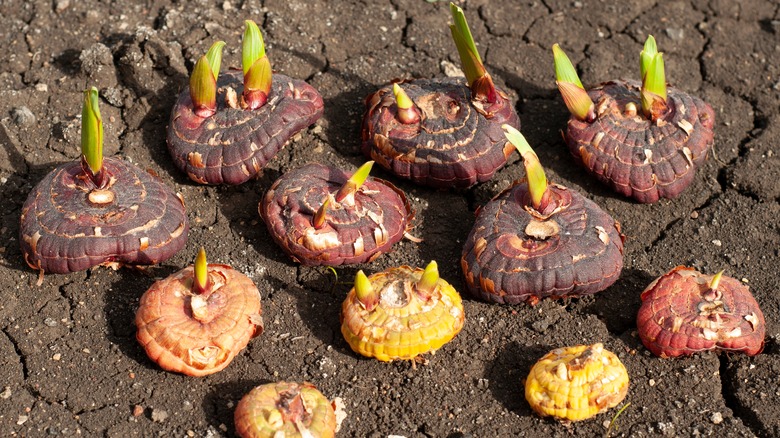Are Dried Out Bulbs Still Worth Planting? Our Professional Gardener Weighs In
Gardeners are often thrifty people — they often like to grow their own food, after all — so they tend to look for ways to save money on gardening costs. Plant swaps, thrift shops, and yard sales are great ways to get supplies and tools for free or cheap. However, nothing's worse than noticing you forgot to plant some bulbs and now they look dried out and, well, sad. Is it still worth planting these forgotten bulbs? The answer is — it depends.
Depending on the variety of bulb, a bit of neglect or tardiness in planting them may not be a death knell. You can choose to plant them right away, regardless of the timing, but the best thing to do is plant them at the time you normally would have — i.e. wait until autumn to plant spring-blooming bulbs or spring to plant summer or late season bloomers like autumn crocuses, Asiatic lilies, gladioli, or ranunculus. Planting spring-blooming bulbs in the spring isn't out of the question, but they probably won't follow their usual growth cycle until the following year.
Bulbs should be cleaned up before planting in case the outer sheaths have any mold, mildew, or foreign matter on them. Similar to bulbs, plants grown from rhizomes (like irises or geraniums) or tubers (like dahlias) can also be cleaned up (trimmed of dead or damaged parts) before planting. You should also check your dried bulbs carefully for the presence of disease or pests.
Signs of life (and death) in dried-out bulbs
If your bulbs are dried out but not completely dehydrated, there may still be some life left in them. If you can see any actual green growth on the bulbs, they're definitely still good to use, even if the rest of the bulb looks a bit desiccated. Any sign of green generally means the bulb is still viable.
If bulbs are damaged as well as dried out, you may worry they're even more likely to be useless. Sometimes bulbs get damaged when dividing — if I had a nickel for every time I've split a daffodil or hyacinth bulb when dividing them, I'd be able to buy another bag of bulbs. What that happens, I just replant those pieces and if they still have green life in them, they sprout more plants and continue to increase as usual. Once these smaller pieces get larger, they bloom in the spring like your other bulbs.
Firmness is also important. If the bulb is firm to the touch, it means it still contains moisture and living material. If bulbs are soft or mushy, however, they may be rotten. Also give them a sniff: If the bulb smells musty or otherwise unpleasant, it may have succumbed to rot, or a fungal or bacterial disease. In this case, don't plant them, as the disease may spread through soil or to other plants.
To plant or not to plant
Most perennial bulbs — like daffodils, grape hyacinths, gladioli, and lilies — are very resilient, even if they get a bit dried out. Keep them in a cool, dry place until you're ready to plant, and check them again for any possible problems. Moisture is a bigger enemy to unplanted bulbs than sunlight because of the potential for rot or mildew, but more sun could dry them further.
Some gardeners swear by soaking dried out bulbs in water to revive them before planting. However, too much moisture could damage bulbs that are already weakened from having dried out. If you're considering just throwing the bulbs away, go ahead and plant them, provided there's no sign of mold, mildew, or other diseases or pests such as mites. Mites can affect Narcissus (daffodils), lilies, and hyacinths. I've also seen mites on tulip bulbs: They look like tiny pale, yellow flecks. Bulbs with evidence of disease or pests should be thrown away.
Even if your dried out bulbs are free of diseases or pests, you might still feel uneasy about planting them in your garden. If they're summer or fall bloomers, try planting them in containers; If they do well, you can transfer them to your garden when they're done blooming. If you're feeling adventurous, and the bulbs are dry but otherwise healthy, try planting them and see what happens. If they fail to grow or bloom, dig them up and discard them.


